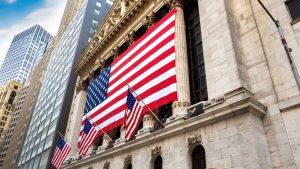
(Bloomberg) — A slide in most megacaps hit stocks in the final stretch of US trading, with Wall Street gearing up for a pulse check from Nvidia Corp. on the artificial-intelligence technology that has powered the bull market.
Most Read from Bloomberg
The S&P 500 broke below 6,000 and the Nasdaq 100 lost over 1%. Just days ahead of Nvidia’s earnings, hedge funds’ net exposure to “Magnificent Seven” megacaps hit the lowest level since April 2023. The chipmaker lost 3.1%. Microsoft Corp. fell as an analyst said the software giant dropped some AI data-center leases. Apple Inc. rose.
Investors have started to boost bets that volatility will come back as Nvidia’s earnings on Wednesday could be the first in a whirlwind of events with the potential to send the market into conniptions. That’s after the US equity benchmark spent 36 sessions without posting consecutive declines of more than 1%.
“There is very little room for Nvidia to disappoint analyst profit expectations this year, given its assumed leadership position in AI, already elevated valuations, and new developments and entrants in the space that could threaten its dominance over time,” said Anthony Saglimbene at Ameriprise.
The S&P 500 lost 0.5%. The Nasdaq 100 fell 1.2%. The Dow Jones Industrial Average wavered.
Among individual stock movers, Alibaba Group Holding Ltd. tumbled in US trading amid a $53 billion AI spending pledge and as The Trump administration took aim at China with a series of moves involving investment and trade. Berkshire Hathaway Inc. jumped on a surge in operating profit.
The yield on 10-year Treasuries slid three basis points to 4.4%. Bonds remained higher after a $69 billion sale of two-year notes drew record demand. Canada’s dollar and Mexico’s peso fell as President Donald Trump expects tariffs planned to take effect on both countries to go ahead next month.
To Chris Larkin at E*Trade from Morgan Stanley, this could be a key week for a stock market that’s mostly been trading sideways for more than two months.
The S&P 500 has been in a tight trading range since the election, remaining in a 4% range over the past three months, the narrowest range since 2017, according to Mark Hackett at Nationwide
“The market is churning sideways, driven by investor confusion, a natural consolidation period following recent gains, and seasonal weakness in February,” he said. “However, the strong macro backdrop, robust earnings, and healthy fund flows argue for a breakout to the upside once momentum returns.”


